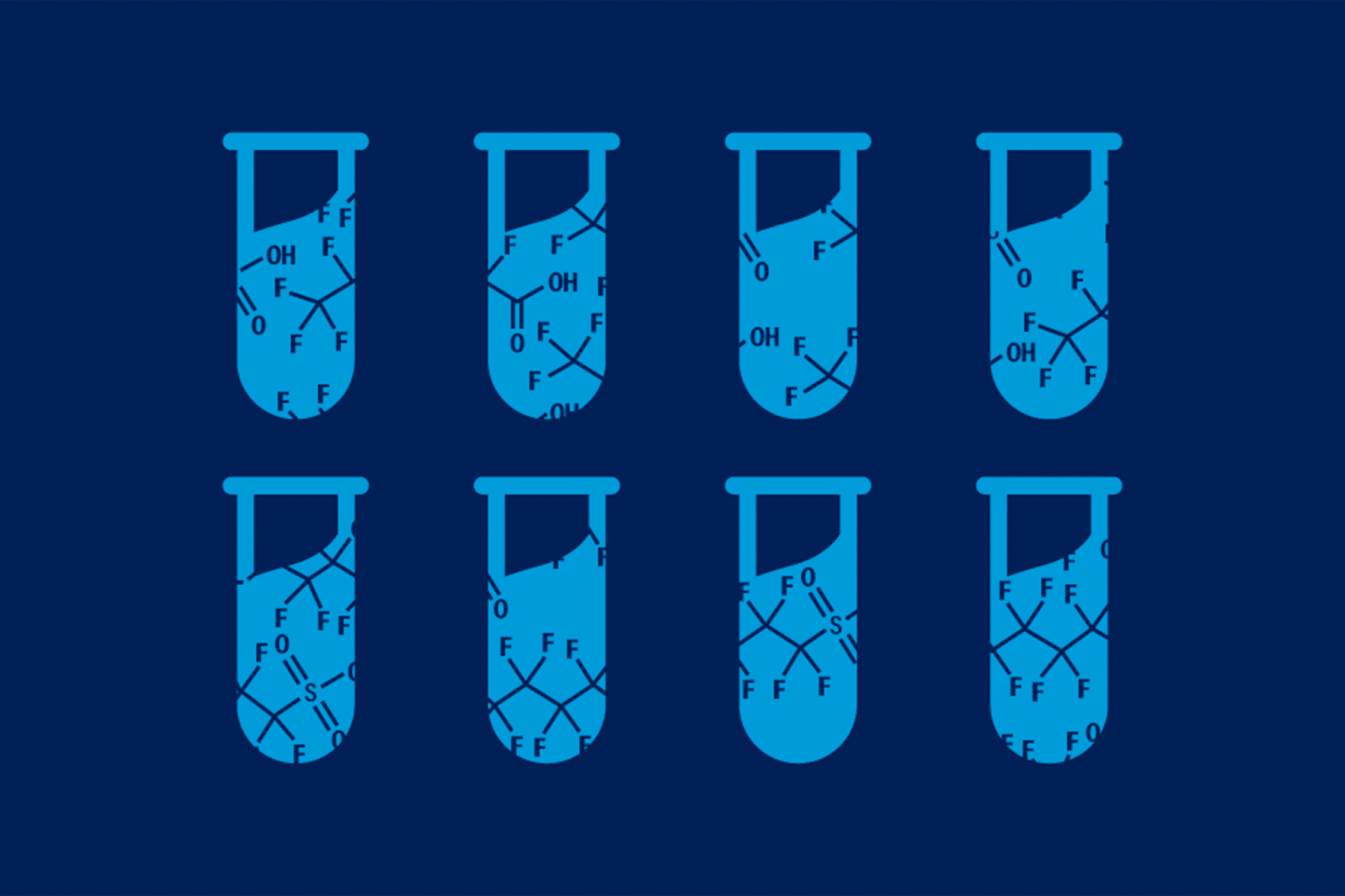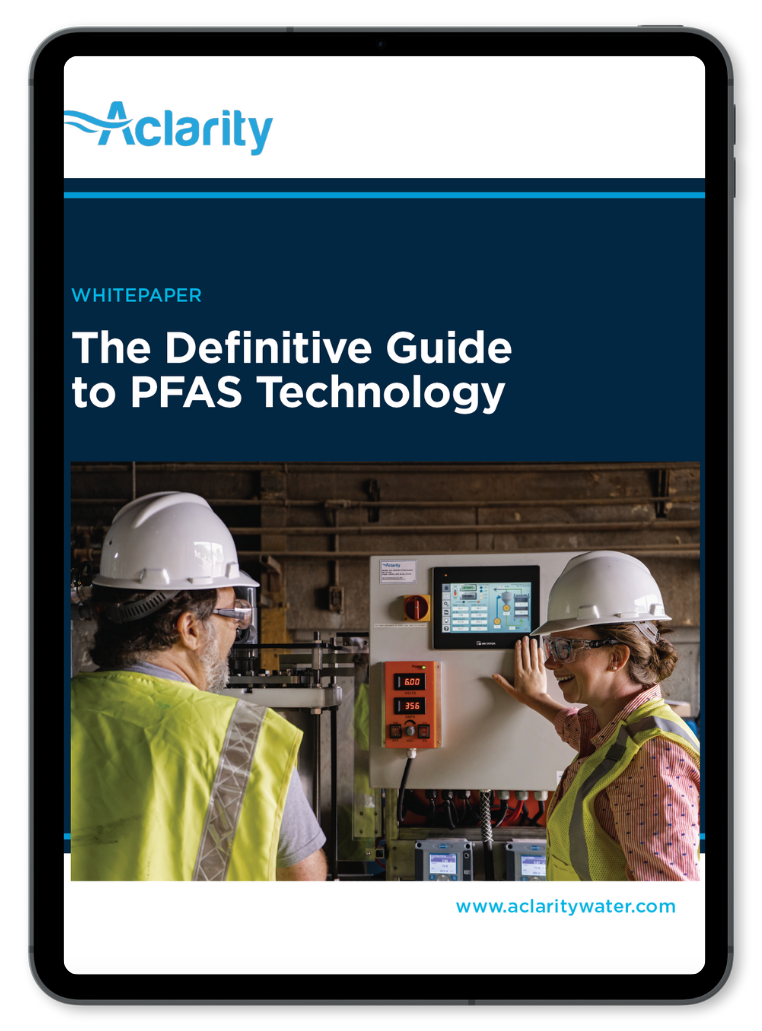Is this the beginning of the end for ‘Forever Chemicals’?
December 6, 2023 | 6 min read
On October 30th, 2023, the United States of America’s EPA (Environmental Protection Agency) introduced changes to the Reporting Requirements for Per- and Polyfluoroalkyl Substances (PFAS) and to Supplier Notifications for Chemicals of Specific Concern. As a result, it will now be necessary for manufacturers to report the concentrations of PFAS in their products – without exception. In addition, PFAS has been added to the list of lower thresholds for chemicals of special concern. In this short blog, we explore whether this finally signals the end of ‘forever chemicals’.

Clear view of PFAS
This EPA’s new rule will facilitate the quantification of the amount of PFAS that is released in the United States and also the source of the PFAS. The EPA states: “PFAS are now subject to the same reporting requirements as other chemicals of special concern. (…) Because PFAS are used at low concentrations in many products, the elimination of the de minimis exemption will result in a more complete picture of the releases and other waste management quantities for these chemicals.”
The full “Reporting Requirements” material is available here.
Adding PFAS compounds to the Toxics Release Inventory (TRI) program puts pressure not only on the producers and upstream processors of the PFAS flow but also defines them as toxic and harmful compounds in extremely low concentrations in wastewater streams.
What does it mean for the millions of consumers of PFAS products, or employees working on municipal waste and wastewater management?
Is a clear view of how much and where PFAS is entering and circulating in our economy enough?
PFAS Background
PFAS are a large group of synthetic chemicals that have been used in consumer products around the world since the 1950s. The key chemical property that PFAS compounds share is a fluorine substituent. Specifically, a hydrogen atom is replaced by a fluorine atom.
Forever Chemicals A Definition
These chemicals are called ‘forever chemicals’ because these human-made compounds degrade very slowly. The fluorocarbon bond gives PFAS extreme resistance to biological degradation. In addition, there are only a handful of naturally occurring fluorinated compounds, therefore bacteria have not had long to adapt and develop pathways to degrade these compounds. As a result, PFAS compounds do not undergo natural decay in the environment or in our bodies. After over 70 years of production, it has been scientifically proven that PFAS are ubiquitous in the aquatic environment and organisms (Valsecchi et al., 2013).
Most PFAS compounds have more than one fluoro-carbon bond present in their structure, which makes them not only super-stable but also harmful to all living organisms. PFAS have exceptional surfactant characteristics and easily mix, disperse, or enhance the action of other substances. This is one of the reasons we don’t hear about them often, as they are generally used in low concentrations, and are not the main ingredient of the most common goods, with few exceptions, like cooking coatings or fire extinguishers.

The Definitive Guide to PFAS Technology Whitepaper
Comprehensive guide to understanding PFAS management strategies to reduce risk and safeguard environmental and public health.
Stay current on advantages and disadvantages of technologies available for PFAS:
- Removal
- Disposal
- Destruction
What impact do the EPA changes have?
It is a step in the right direction, recognizing the problem and showing that authorities are serious about understanding the quantities of PFAS introduced into the environment, into our lives, and our bodies. That said understanding how much PFAS is being released is only the beginning and to quote Winston Churchill after the Allies first major victory, three years into War World II:
Now this is not the end. It is not even the beginning of the end. But it is, perhaps, the end of the beginning.
- Winston Churchill -
It is difficult to see how PFAS-containing products will disappear from our lives completely. Even if the use of synthesized PFAS compounds was prohibited - it is important to say, that this is not the case, and the production of PFAS containing compounds continues today – there would still be the issue of cleaning up the PFAS already in the environment.
Various industries have been producing products containing PFAS over the last 70 years. Many of these products have ended up in landfills where the PFAS is not degraded. Today we all, as a collective, produce more and more waste every year. More waste. More landfill leachate. More PFAS release and dispersal to the environment.
According to Statista.com – “There are over 1,250 landfill facilities located in the United States, with the majority in Southern and Midwestern United States’. What we are missing is, how big they become and how much leachate they generate every year. Leachate that contains PFAS on this stage easily penetrates groundwater, and then into water supplies.
‘Dataset of leachate volumes and surface areas for municipal solid waste (MSW) landfills in Ohio, USA from 1988–2020’ publication (Data in Brief, April 2023) gives a good idea of how much leachate has been generated, and what can be observed, as a very worrying trend, the actual increase from just over 20 x 106 gallons per year to over 400 x 106 gallons per year of managed leachate volumes over the last 25 years.”
The Volumes of Leachate Managed from 1988-2020

(Source Data in Brief, April, 2023)
‘The increase in PFAS releases was mainly driven by the hazardous waste management sector, especially one facility that reported 68,500 pounds of PFAS released to a landfill in 2021. Releases of PFAS increased about five-fold from 2020 to 2021” - EPA reports.
Who is paying attention to or paying for PFAS?
We are gaining much better visibility on what PFAS are, where they are, and in what concentrations. The EPA is planning to get industries producing PFAS-containing goods to either exchange PFAS for other, non-harmful ingredients, where possible, or to pay for the remediation, where PFAS are being marked as ‘essential’.
And there are plenty of reasons to do so, as we are all paying for the procrastination in destroying PFAS, with our health. The 2021 Government’s ‘Funding transfers and referrals’ may include only a relatively tiny amount of money dedicated to dealing with direct health issues caused by high concentrations of PFAS ($997,000). What adds up to a significant number of billions of dollars every year is dealing with huge health, growth, and reproductive issues that can be caused by prolonged exposure to low concentrations of PFAS in drinking water. The accumulation of PFAS chemicals in our bodies can trigger multiple health problems. The Agency for Toxic Substances and Disease Registry site explains how one can be exposed and what are relevant health implications (ATSDR website).
In 2022 WaterWorld magazine reported– ‘The total annual expenditure for PFAS treatment systems is estimated to scale from US$334.6 million in 2022 to US$1.1 billion in 2030.’ In February 2023, EPA announced that the Bipartisan Infrastructure Law would invest $5 billion over five years to reduce PFAS in drinking water. The initial allotment of $2 billion to states and territories would be used to prioritize infrastructure and source water treatment for pollutants, like PFAS and other emerging contaminants, and to conduct water quality testing.
What can we then do with PFAS? Do we have any technical advancements that would allow us to destroy PFAS once and for all?
DOWNLOAD NOW: The Definitive Guide to PFAS Technology Whitepaper
Destroying PFAS forever
Aclarity’s Electrochemical Oxidation (EOx) is the first PFAS destruction technology in the world that is being deployed in a full-scale system. Other alternatives, such as removal and disposal, move the problem around, wasting more resources along the way. Aclarity’s EOx system destroys PFAS using a proprietary electrochemical process to break down contaminants, and to destroy PFAS forever, working to remove the majority of PFAS from our environment and preventing PFAS from migrating and contaminating even further.
Aclarity’s EOx is the first full-scale system totally destroying PFAS in the world, and has several key benefits:
- Low operating energy costs (often less than 50 w-hr/gal)
- Additional destruction of other contaminants such as ammonia
- Ability to treat high salinity wastes
- The process is safe and simple
- It does not require extreme high pressure
- It does not require high temperatures
- It does not require harsh caustic amendments
- Landfill operators do not need to be highly involved in the operational process.
- Plug and play. It can hook right into existing leachate tanks with no interruption of site operations or site personnel required after initial installation.
- On-site PFAS destruction.
This may be the most practical and workable way to completely eradicate PFAS.
Summary
This is the beginning of the journey towards minimizing the amount of PFAS produced and discharged to the environment. The acknowledgment of the existing PFAS problem, especially in the water industry, goes further though. Now, the pressure is on the owners and operators of landfills to employ the best solution to start eliminating PFAS from the leachate streams as soon as possible.
Looking to learn more? Get a free evaluation from Aclarity. As with all water treatment, due to the varying nature of leachate and other wastewater streams, results may vary. Aclarity does not advise on PFAS destruction potential until a water analysis is provided and lab scale testing has been completed. Get started today!

WHITEPAPER
Download The Definitive Guide to PFAS Technology whitepaper and delve into current PFAS removal technologies. In this whitepaper, analyze the pros and cons of a variety of PFAS technologies and discover practical exercises for organizations to identify and implement suitable solutions. In this comprehensive document, walk away with an understanding of PFAS management, facilitating informed decision-making to reduce PFAS risk and protect environmental and public health.
